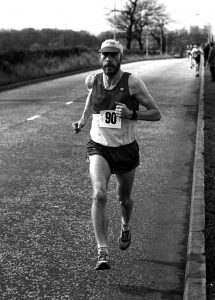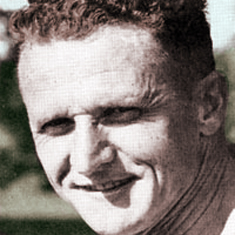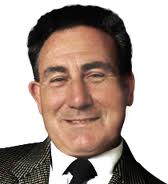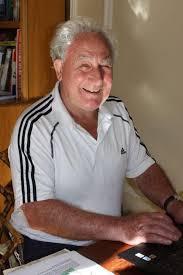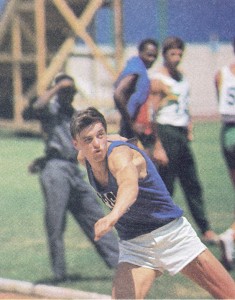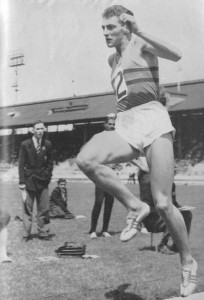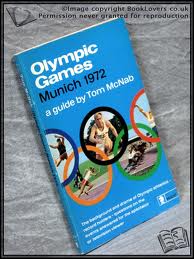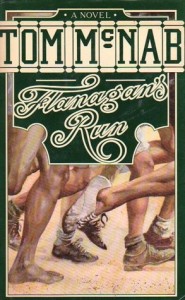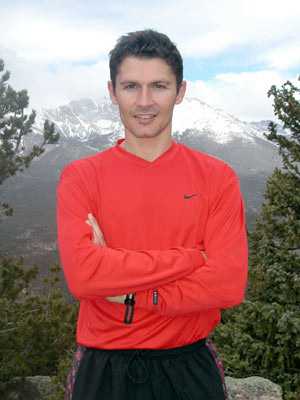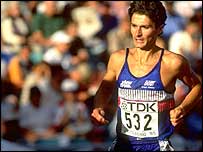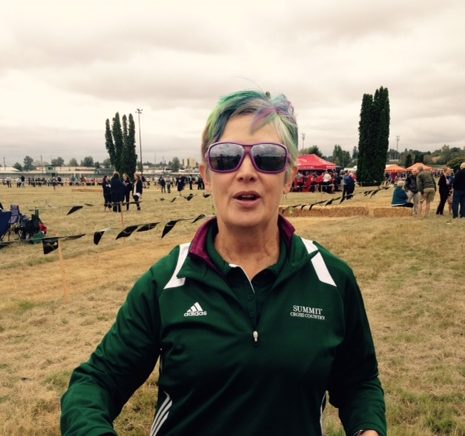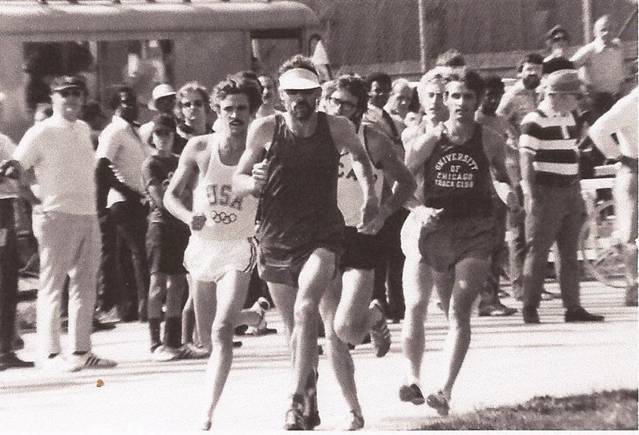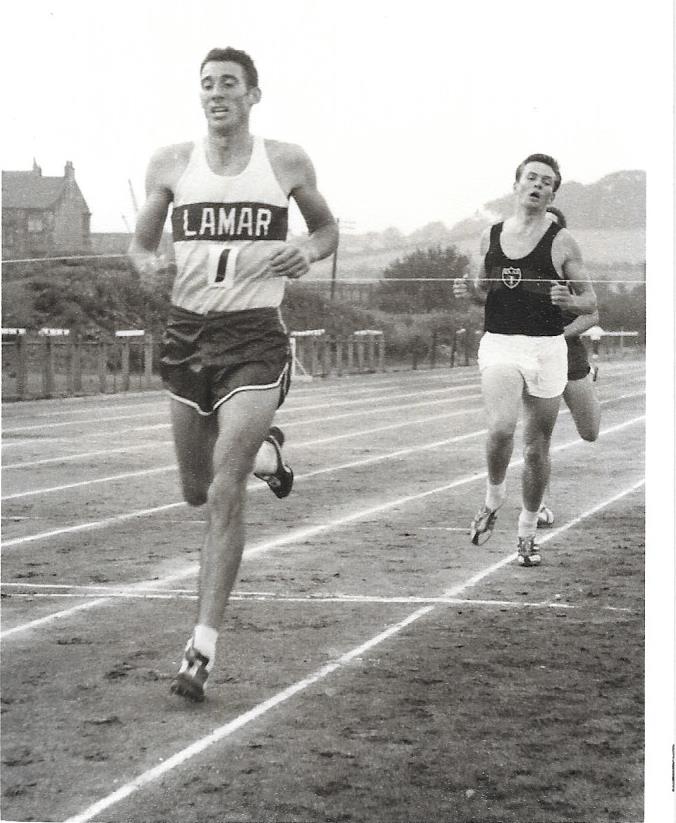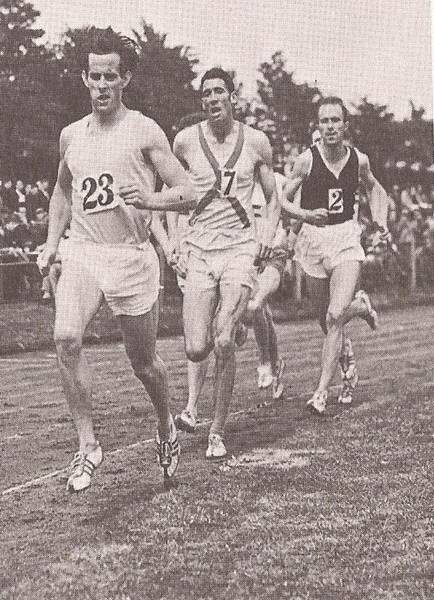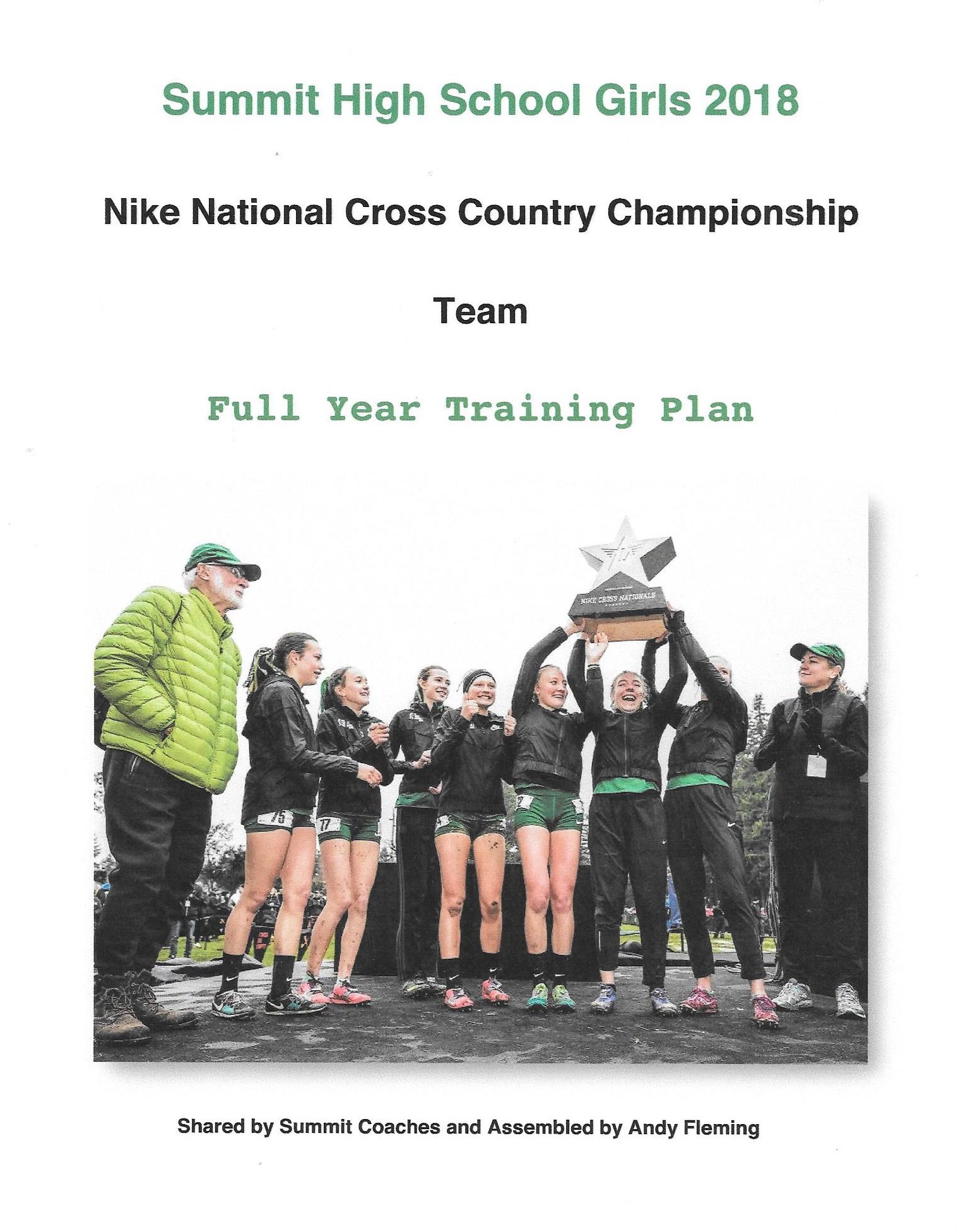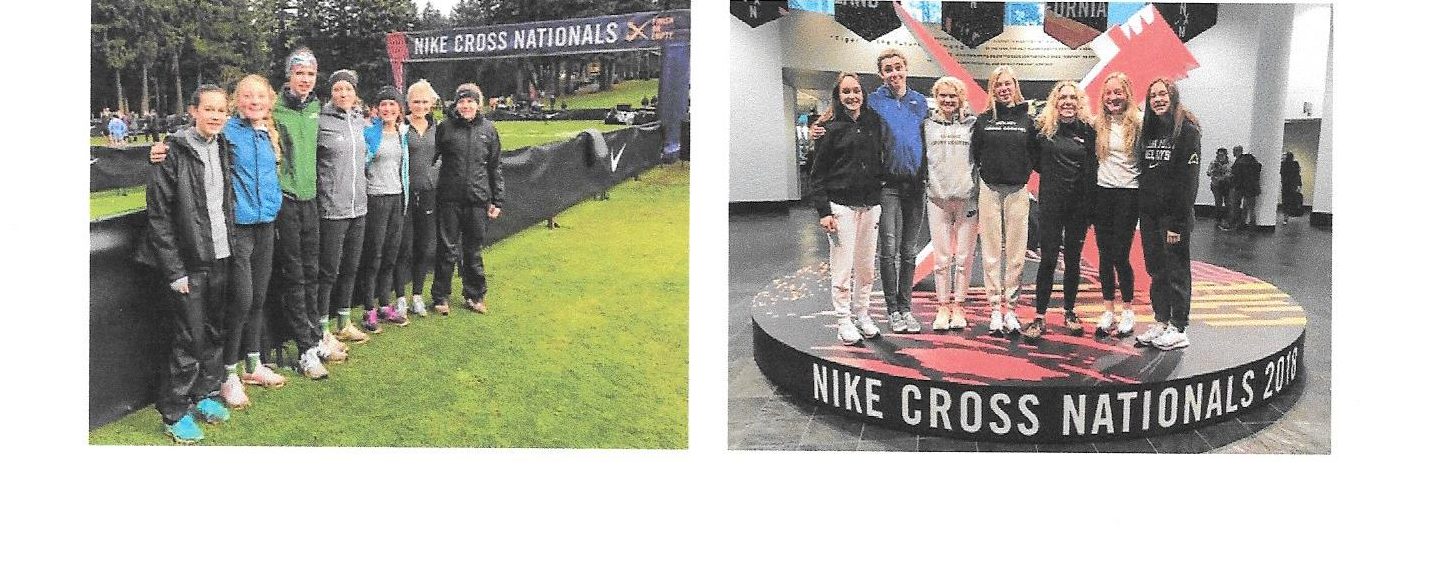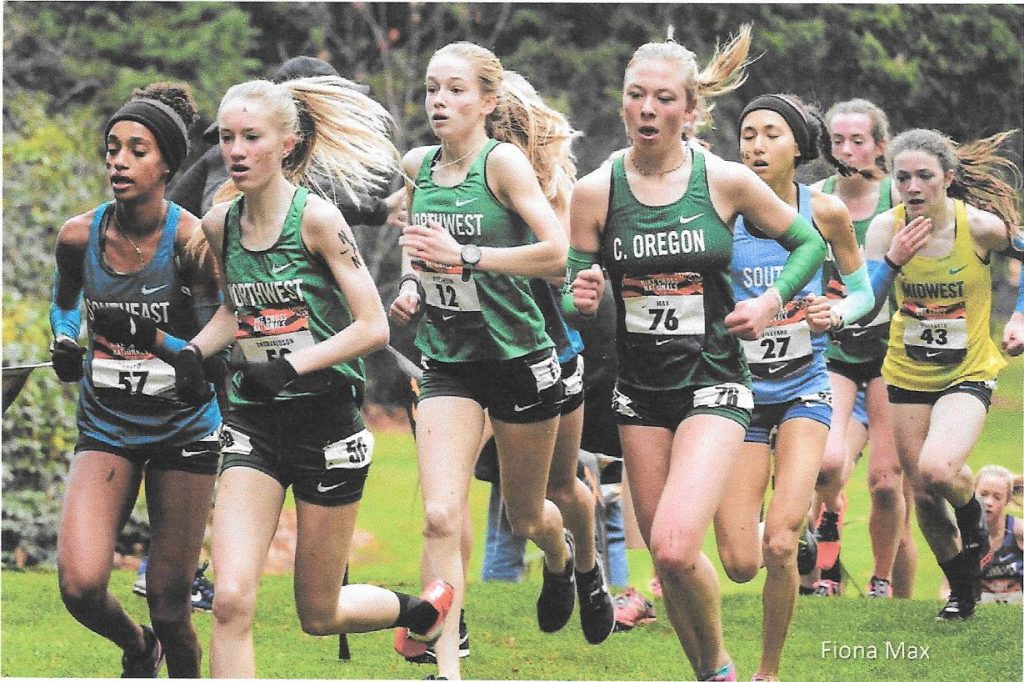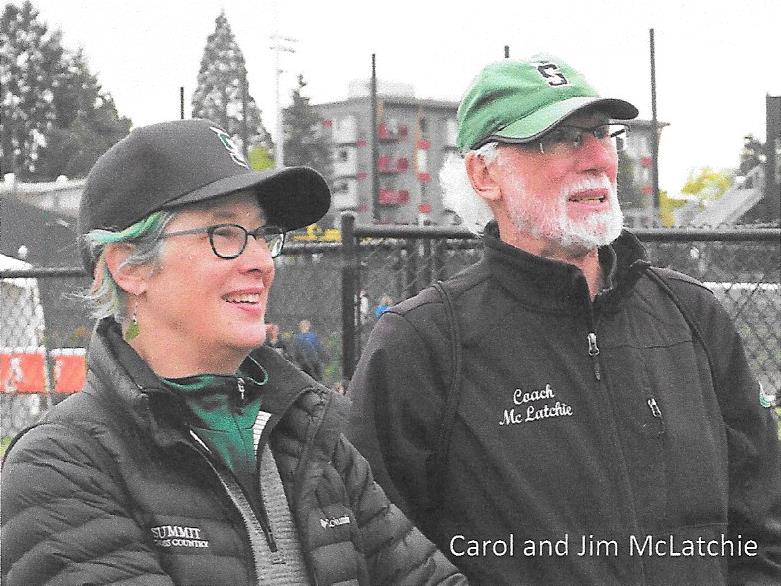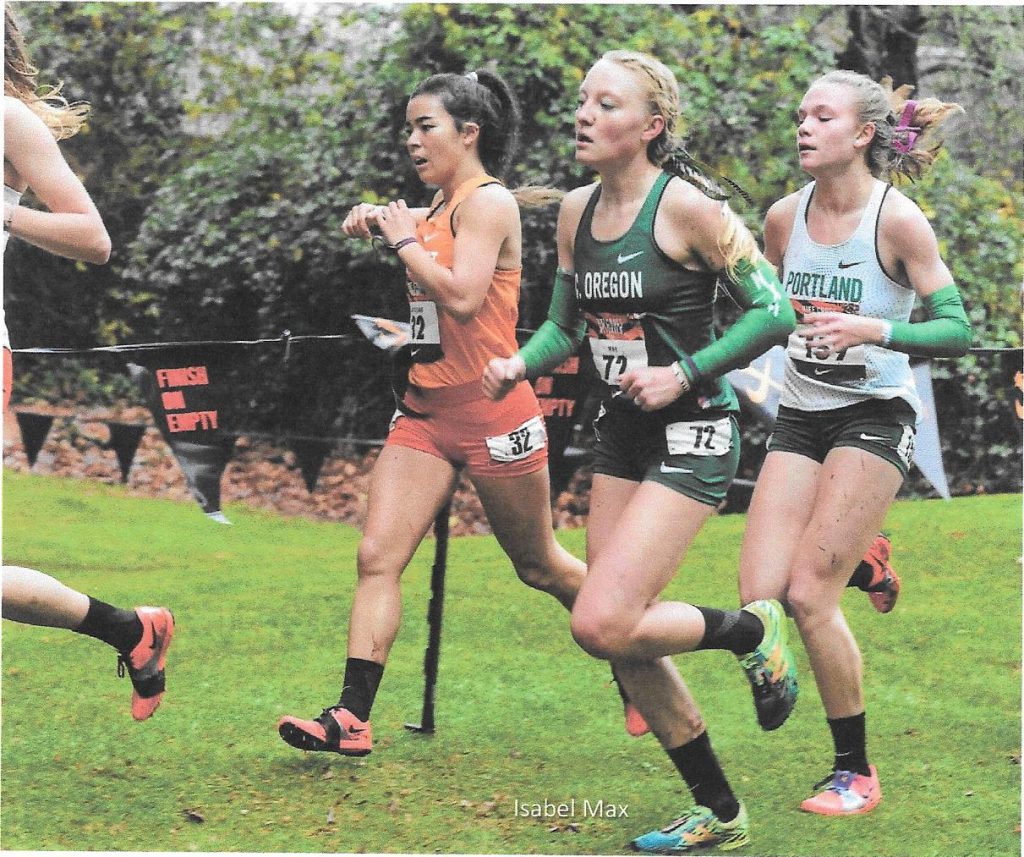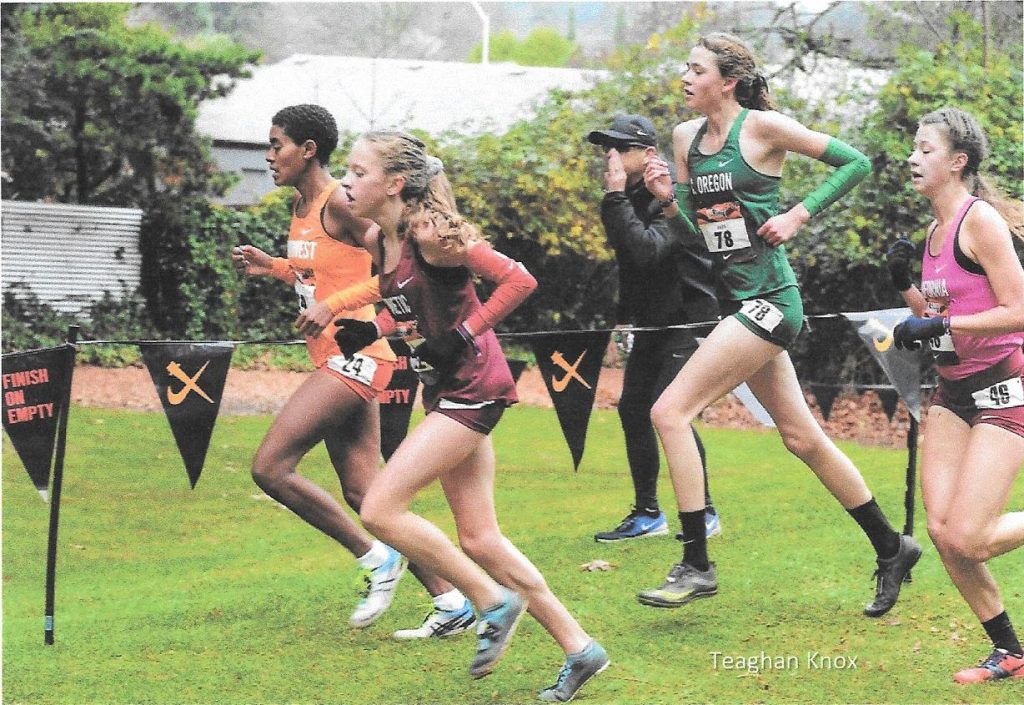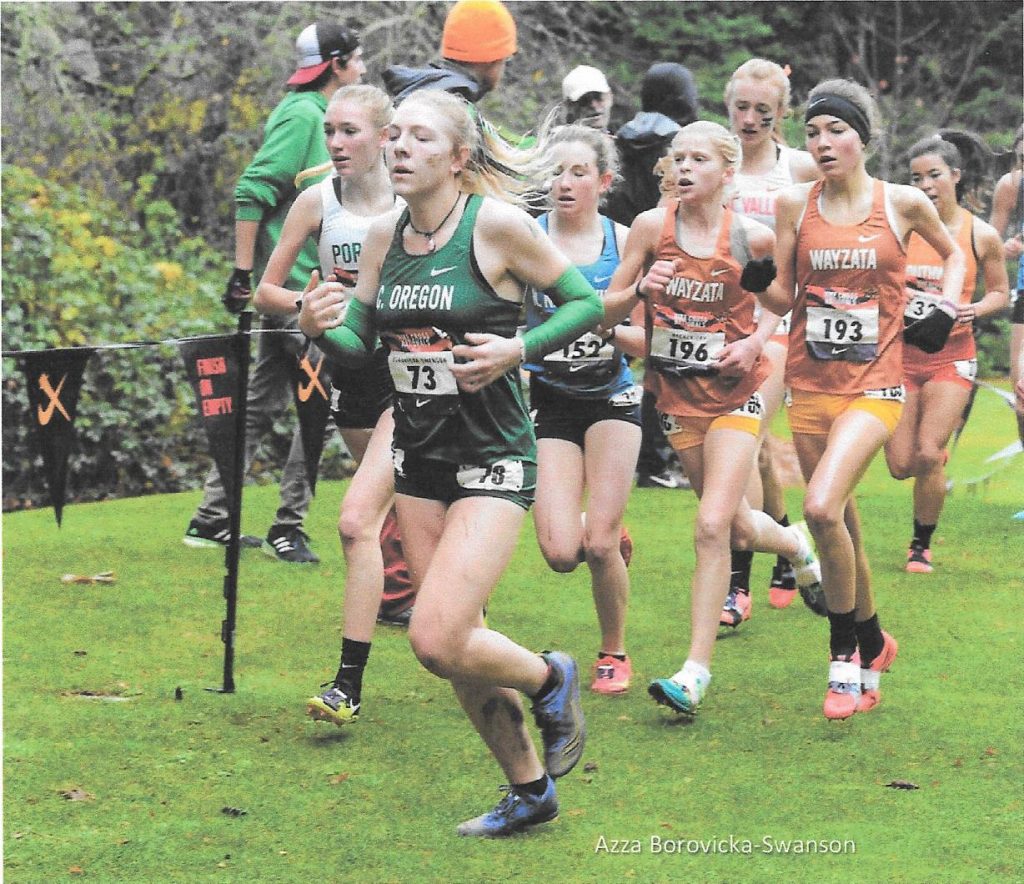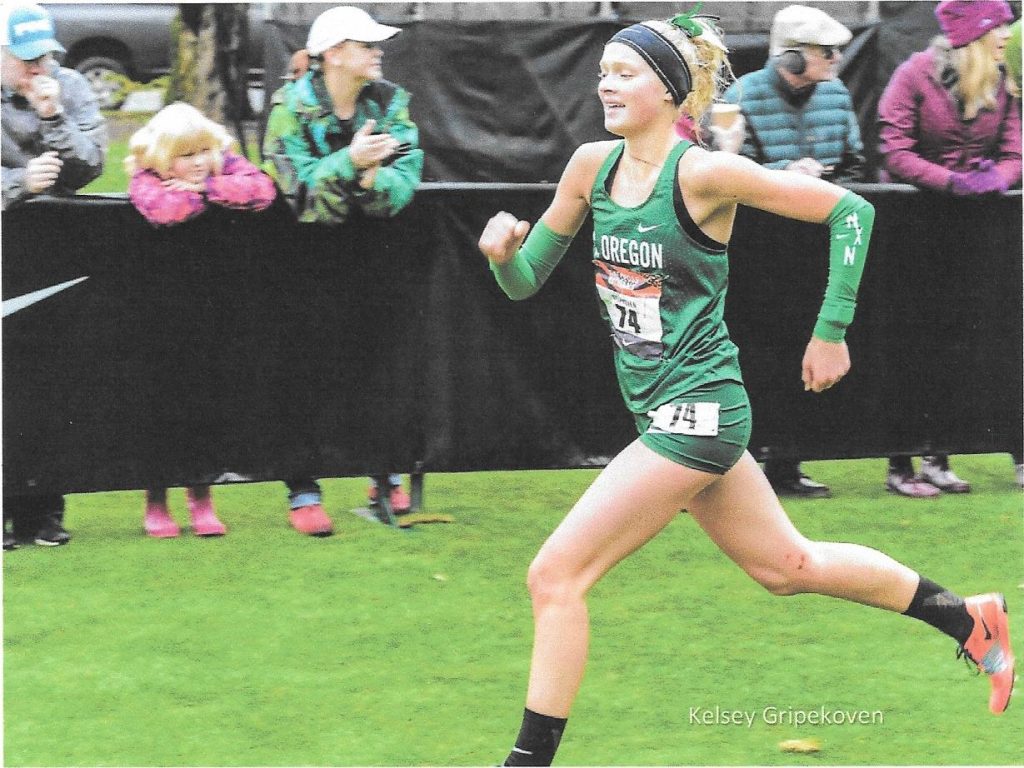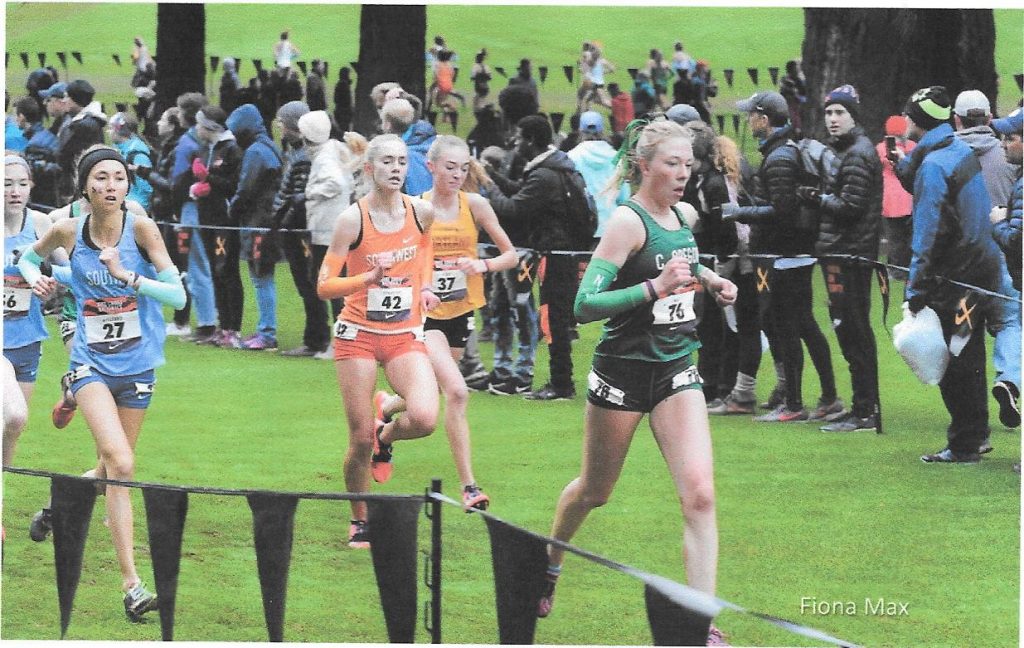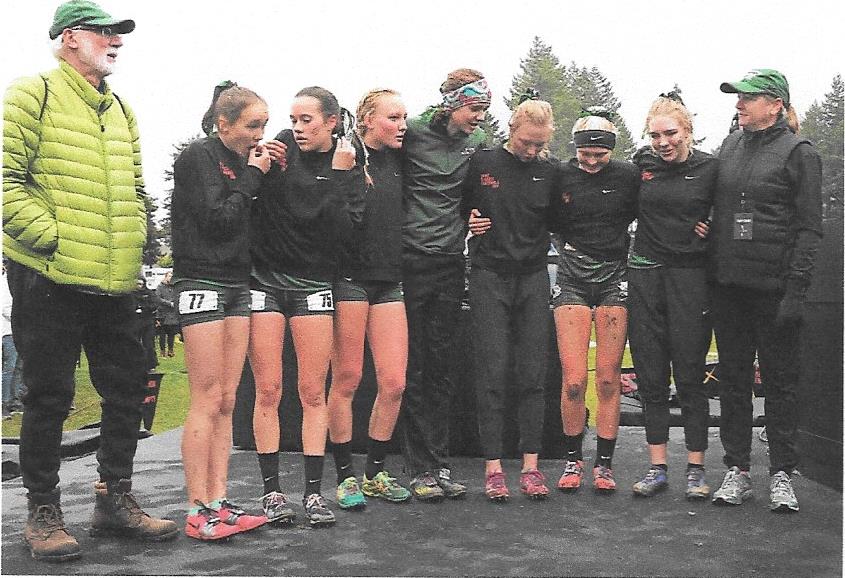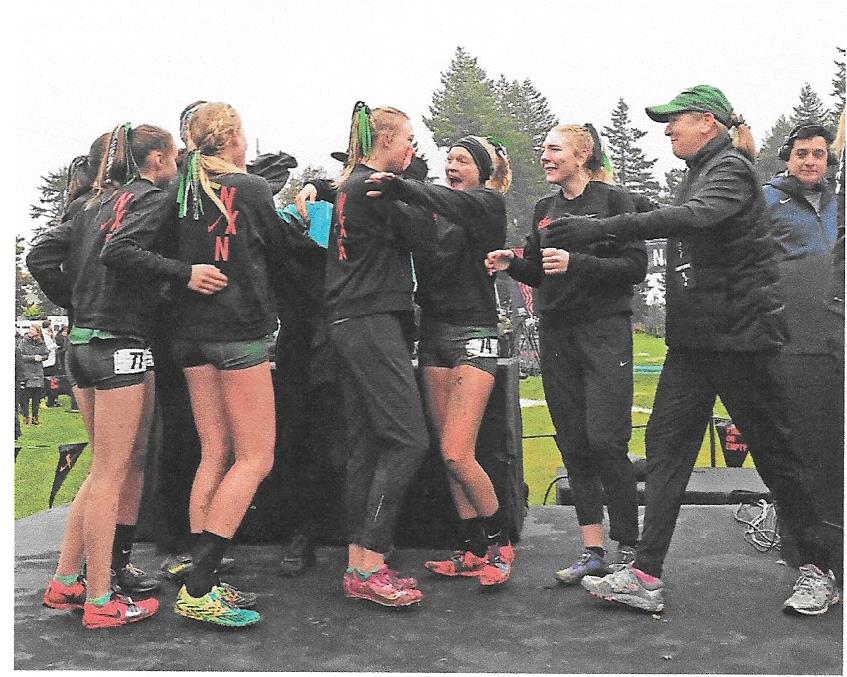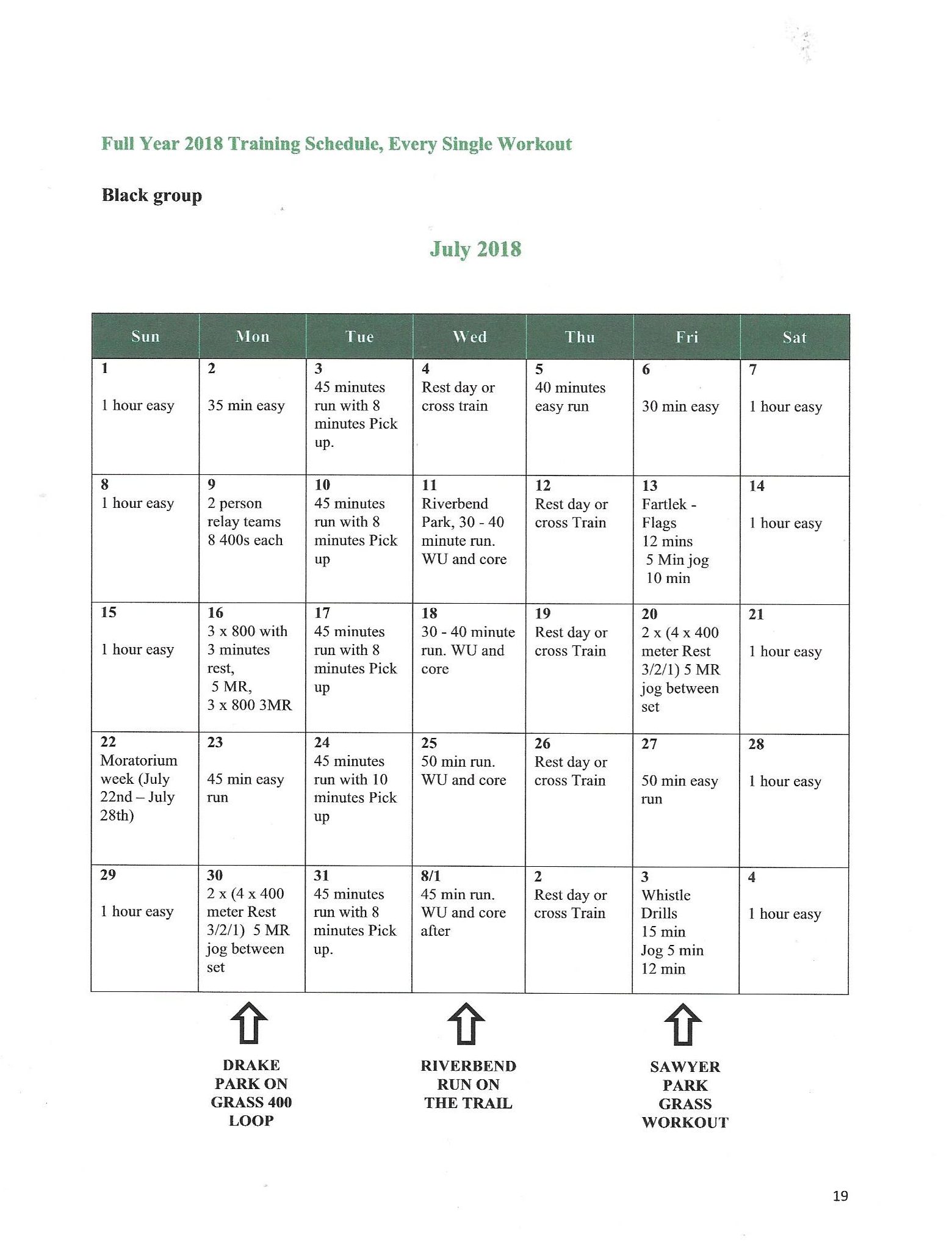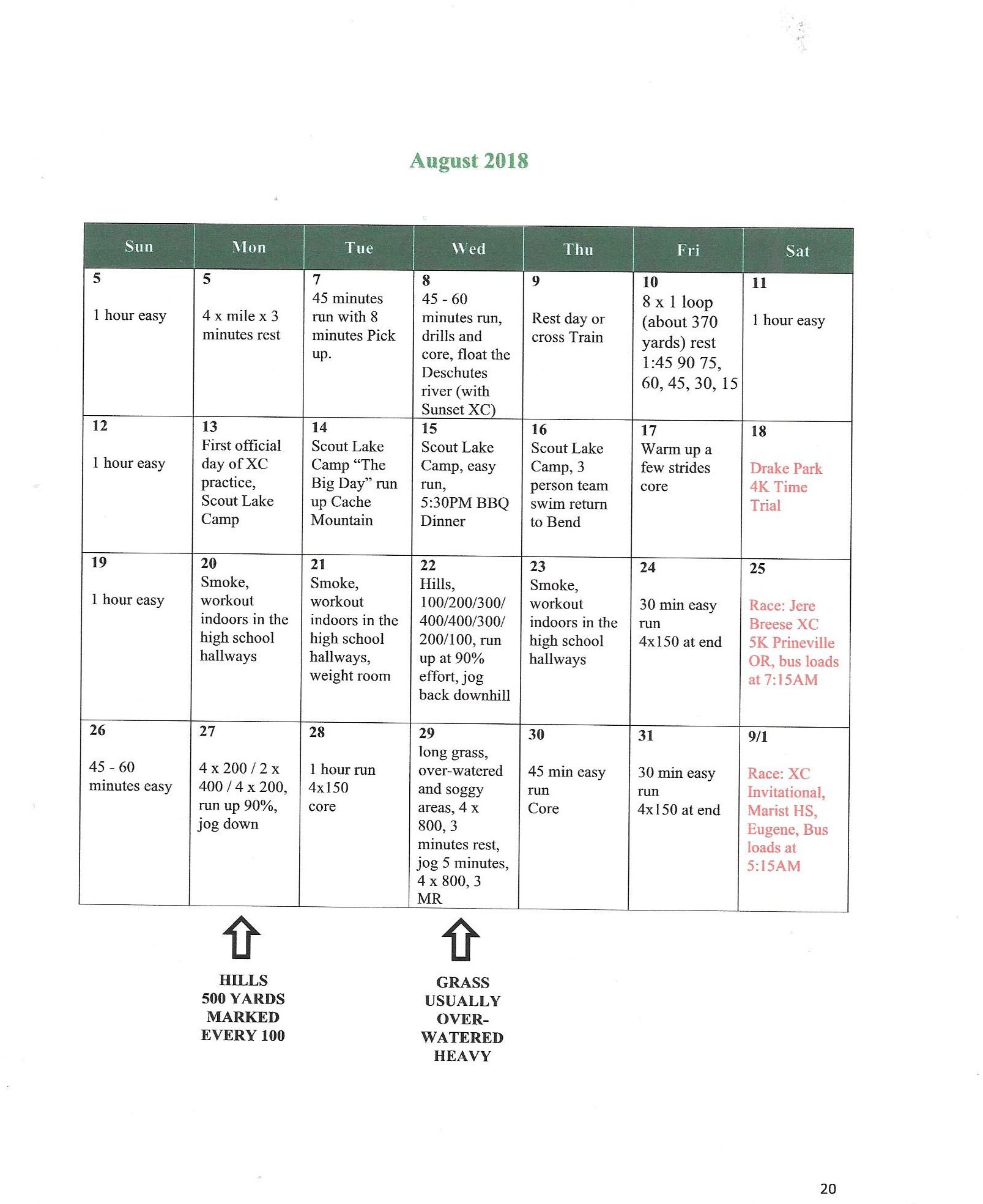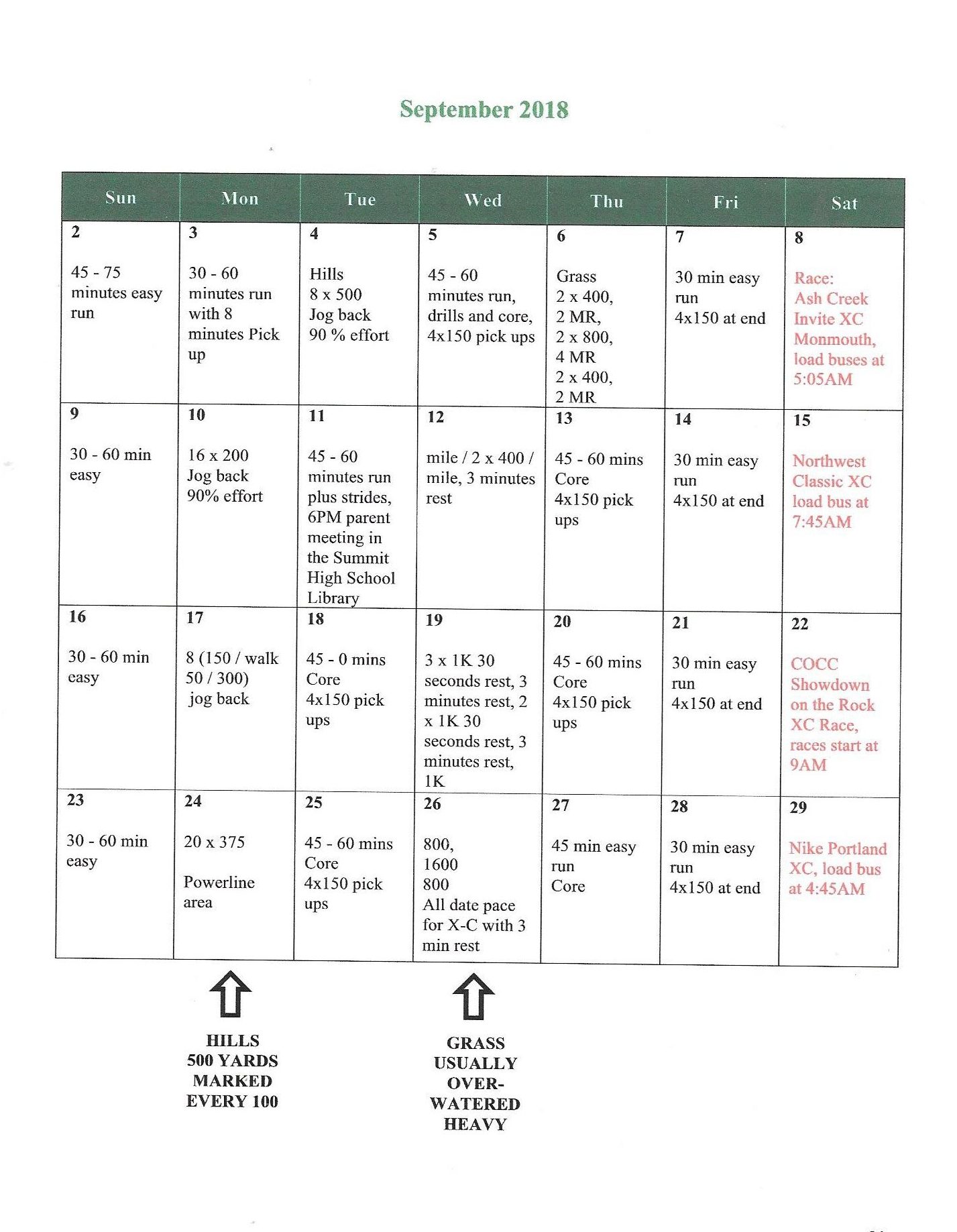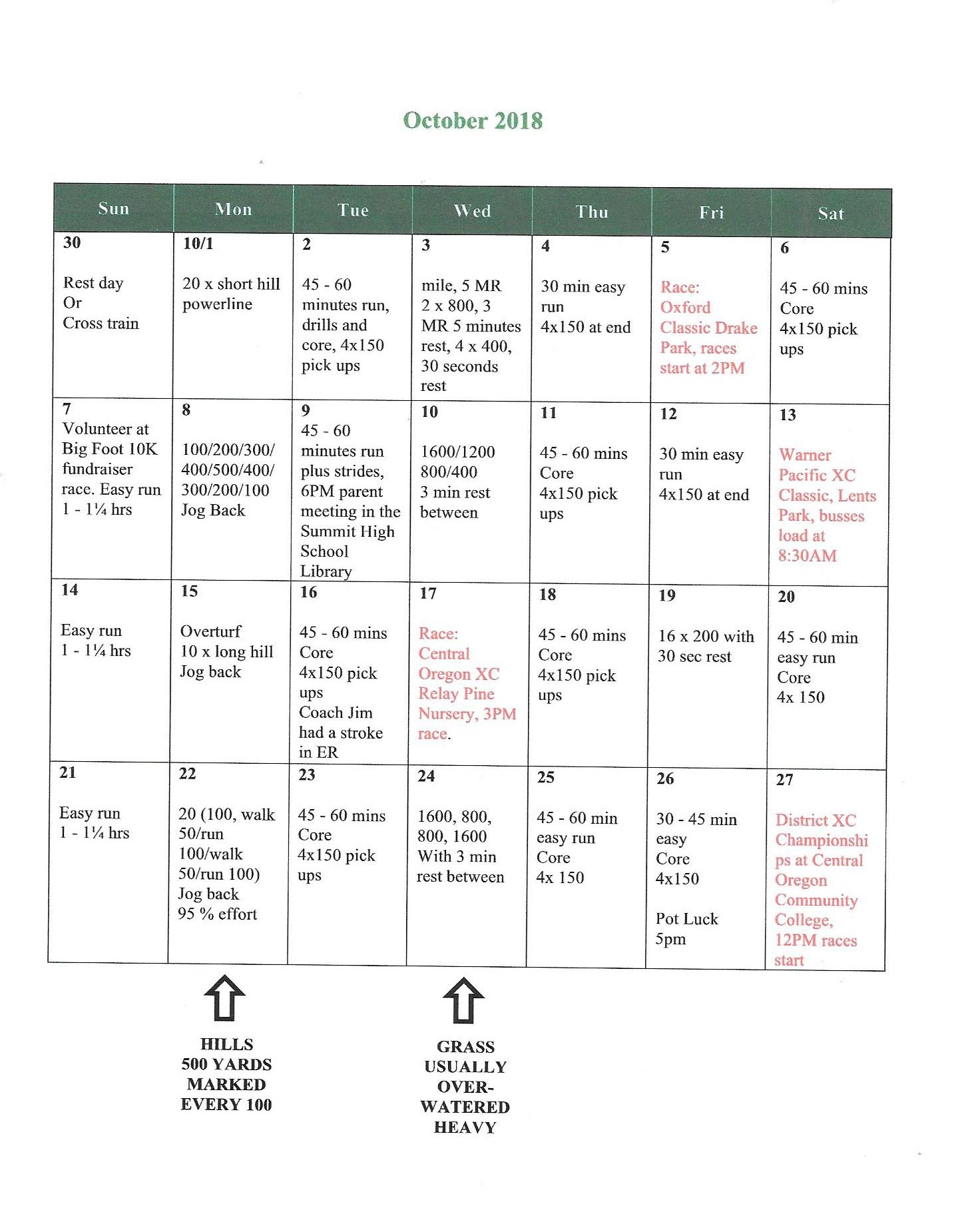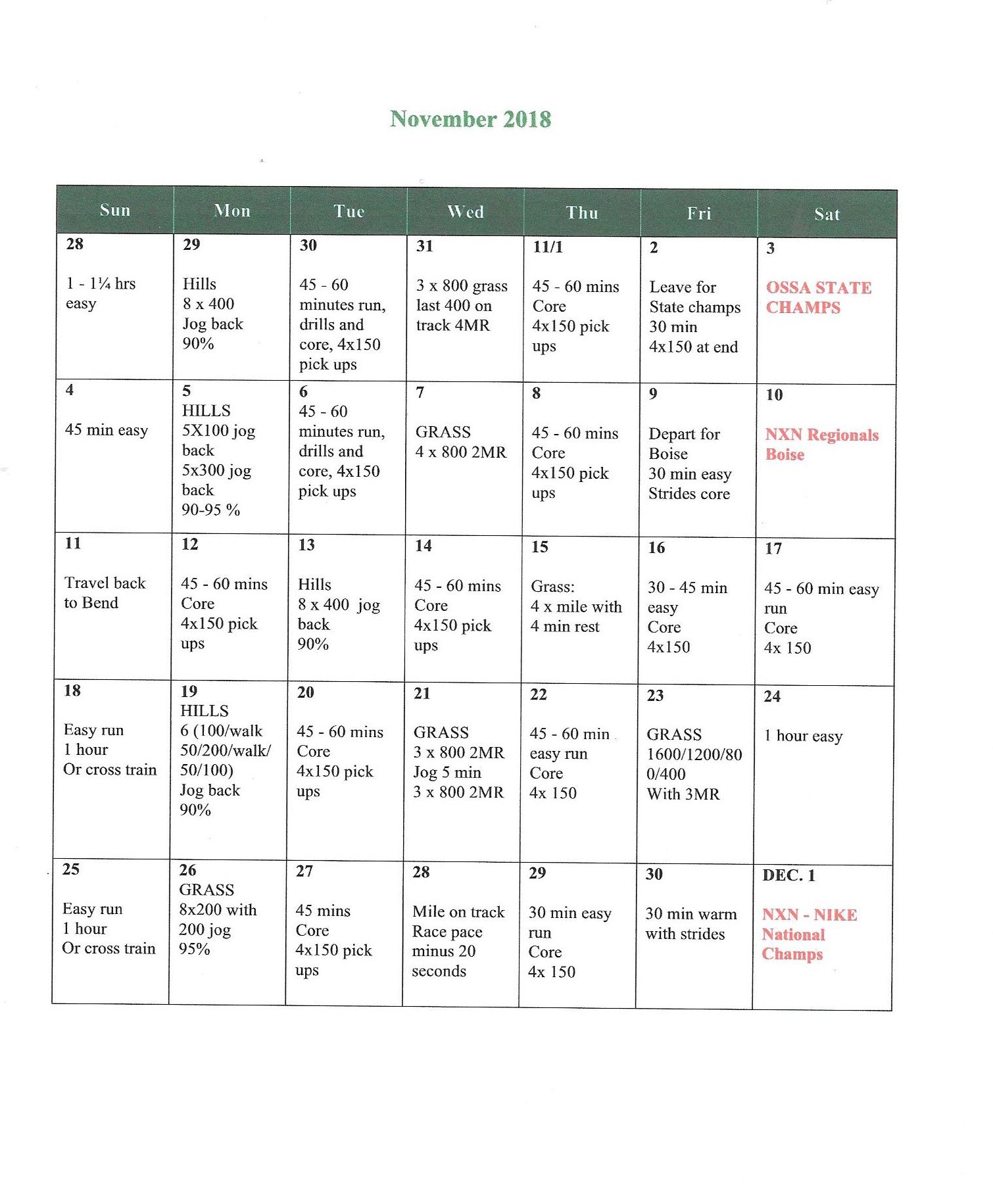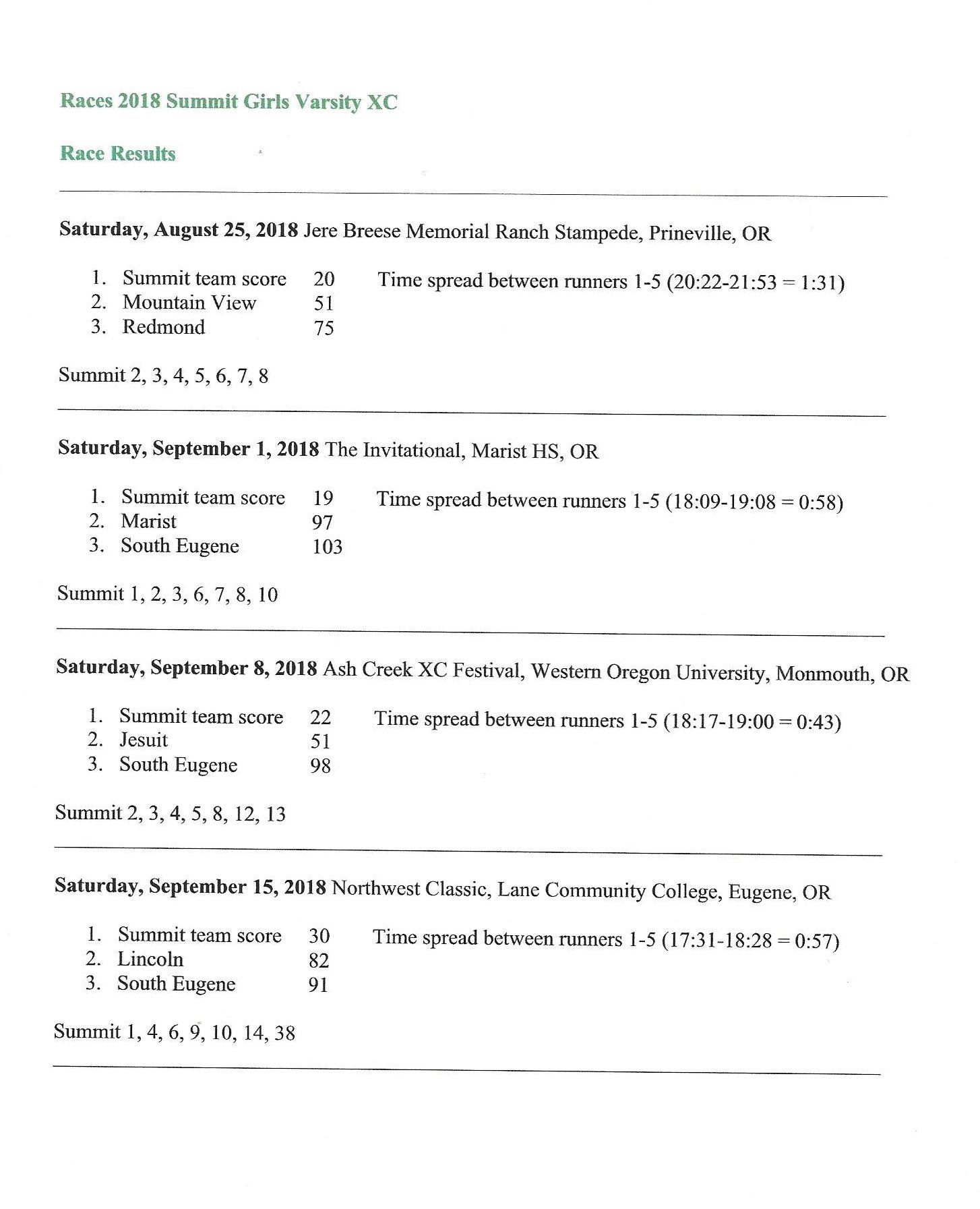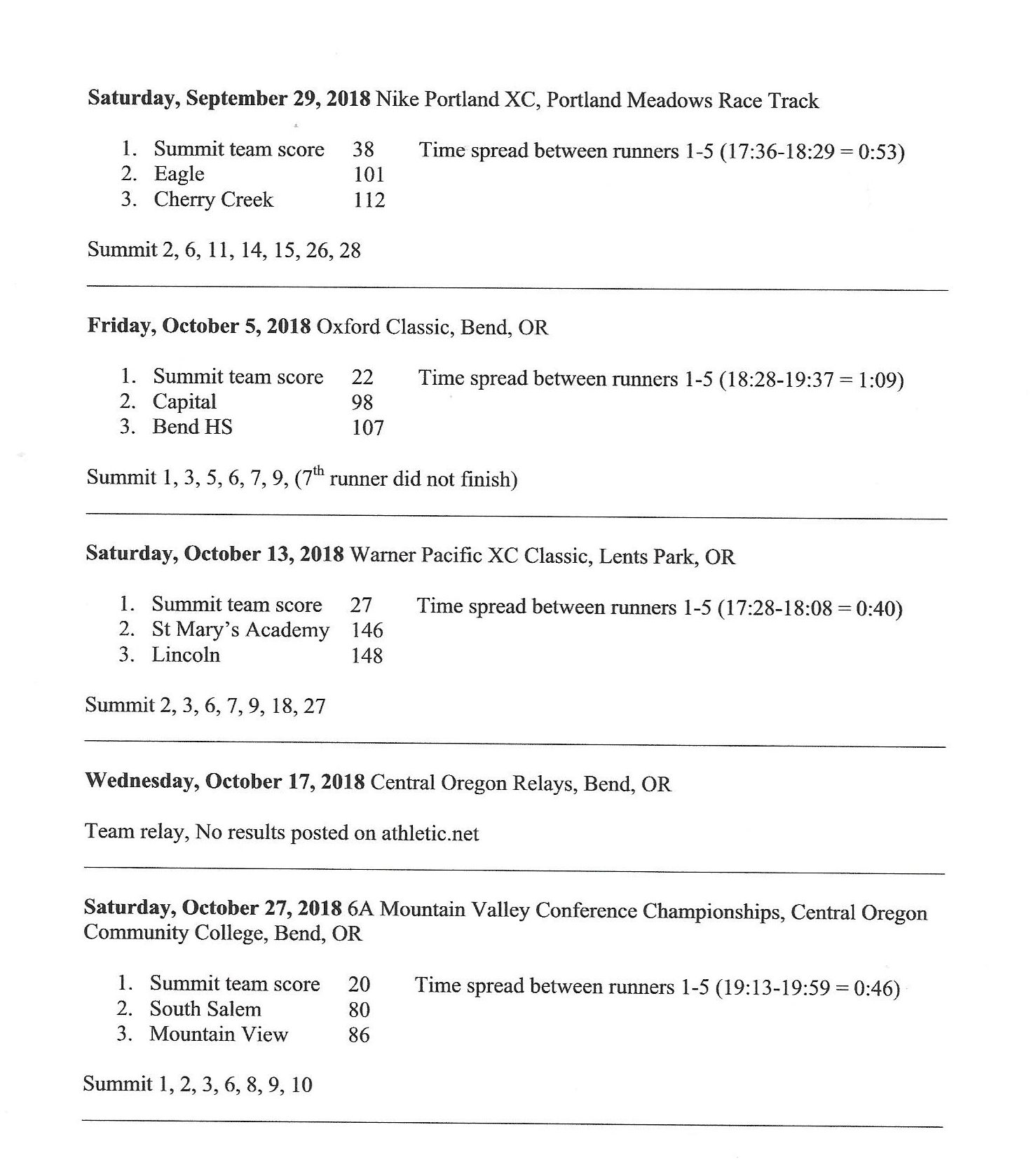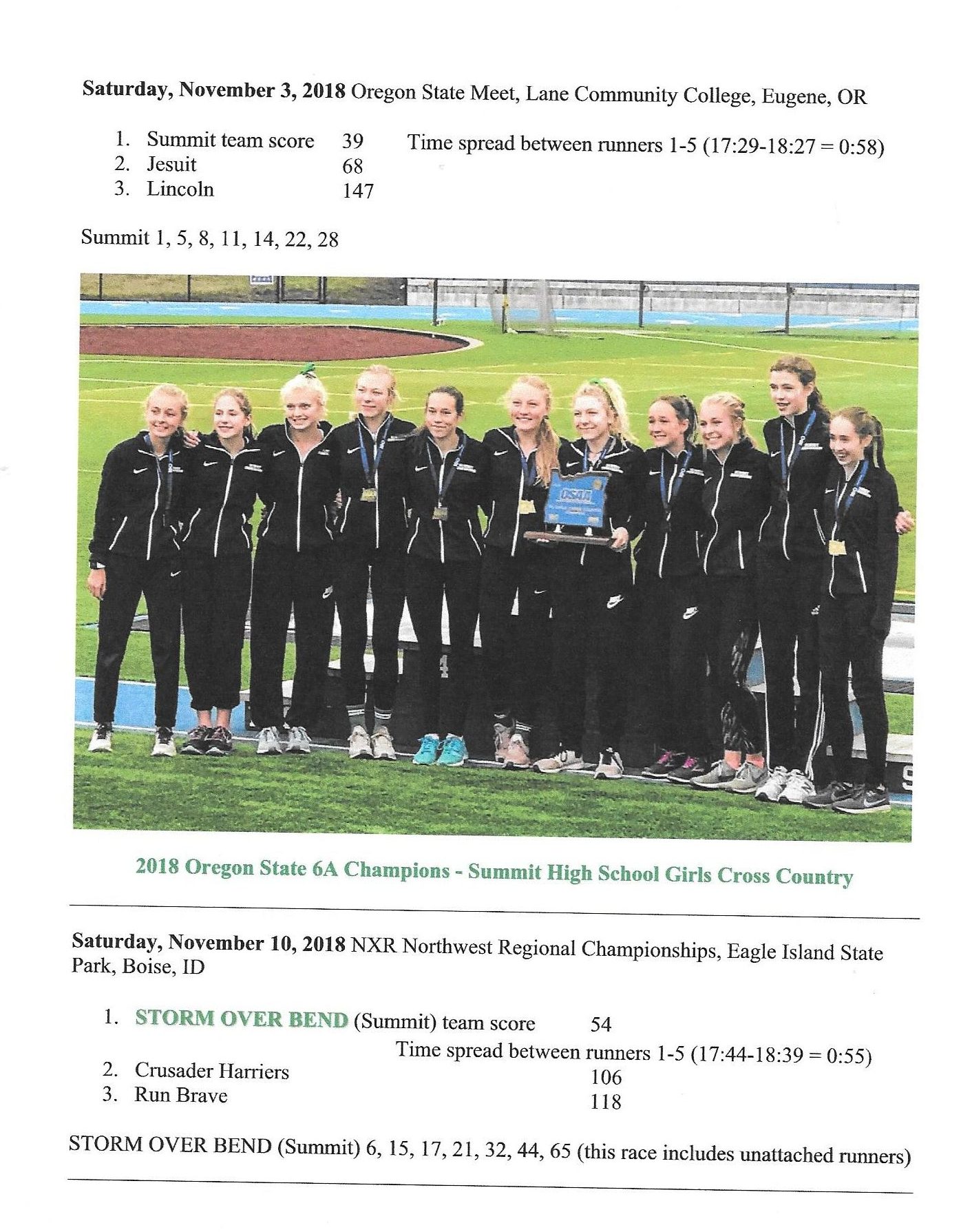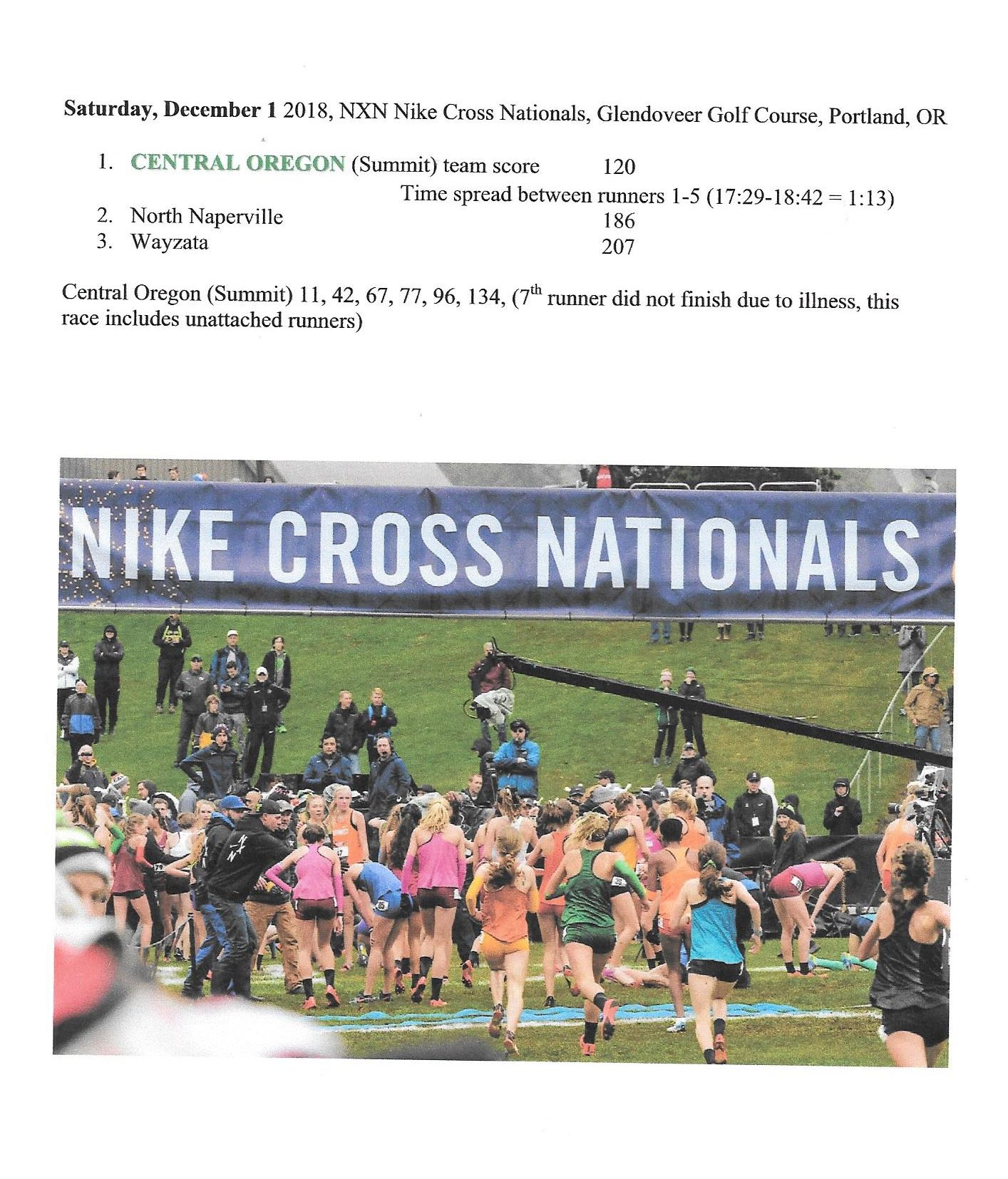WHEN TO HANG UP YOUR WHISTLE, AND WATCH.
A COACH’S STORY.
Draft outline:
1, Background in athletics.
- Influences of other’s theories and ideas
3, Learning to Coach and Self coaching.(parental involvement.)
4.Self Coaching whilst still an active athlete.
- Coaching individual athletes as part of a coaching team.
6 Spotting talent and helping develop potential
- Being realistic about what you can offer as a coach.
- Keeping up with the pace in the practice and science of coaching.
9.. Recognising the time to hang up the whistle, and WATCH!.
- Rewards and Awards.
- My background to athletics started in a Welsh field chasing a rabbit. The outcome was a grumbling appendix that burst and much concern to my family in NW London. I spent 6 weeks in a hospital in Builth Wells. This meant that I started late at my Secondary School in North London where PE was compulsory everyday in 1st year, overseen by a strict ex Sgt Major. As I was not allowed to run there was no alternative, he made me walk round and round the playground for the duration of the lesson. As my strength grew I started to jog and by the following summer I entered in the County Scout Sports to run the half and quarter mile. I finished 2nd and 1st respectively and received my first trophy, a cup my father had won at his work sports day. The following winter aged 13 I won the County Scouts cross country race against boys 2 years older than myself. I was ‘spotted’ by a QPH (Queens Park Harriers) official and invited to train at Paddington Recreation track. The rest is history as they say. Twice I ran at the White City Stadium, in 1953 and 1955, setting a Club record of 2m0.2 sec for the 880yds and finishing 4th in both the Middlesex Schools and Youth Championships. A meritorious award medal for QPH in the London to Brighton Club relay with a course record for the 11th Third place in the London Universities Cross Country Champs in 1961
National Service as a ‘Conchie’, followed by University, led to a career in Social Work, marriage and the arrival of a family, saw an end to serious running until 1979. Unfit and overweight, I started to train for my first Marathon in 1981 in London and broke 3 hrs. After 13 years, 29 marathons, 35000 miles of training and racing in various parts of the world. The results were, a PB Marathon of 2hrs 39m in Dundee in 1984 aged 45. A Scottish 10k track championship in 1991 aged 53 in 34m50s and two gold medals in the Scottish Veterans Championships over 1500 and 800m the same year.
- Influences of other people, their theories and ideas.
Running has been my basic incentive to take up coaching. Getting a daily ‘Fix’ of a run, walk or cycle was crucial and still is, now that I can’t run, with two replacement knees and a diagnosis at 80years old of Parkinson’s disease.
There have been many influences on my running career that relate to my own coaching practice. My PE teacher, Sgt George Addey, whose son was a GB Olympic cyclist, highlighted the importance of dedication. He had me playing soccer and boxing as well as running and made me School Athletic Captain, Ted Hodgeman, our Youth Coach, who met with us on Sundays and Thursdays at the King Edwards Track in Willesden, where Thames Valley now train under Linford Christie. Franz Stampfll, who brought Chris Chataway and Chris Brasher along to our Pacemaker Youth Club in Kilburn in 1956. And took us out for a training run. Percy Ceruty, Coach to Herb Elliot, whose book ‘How to become a Champion’ I read several times and whose schedules I first tried to use for my own training. The athlete I admired most at that time was Emil Zatopek, Particularly for his runs in the London Olympics in 1948 and his 10k, 5k, Marathon, epic triple gold in Helsinki in 1956. Running in army boots in the mud was his secret, but not possible in NW London, except maybe at the Welsh Harp Reservoir near Neasden where Hugh Jones trained and who was also the County Scouts Champion in his day.
Over the past 40 years I have collected a considerable number of coaching manuals and athlete biographies and autobiographies. Many of them I have read in detail, others, more selectively.
Among the most read books, have been those by New Zealand’s Master Coach, Arthur Lydiard, who I had the pleasure and privilege to meet and interview at the Commonwealth Games held in Auckland in 1990. He invited me to his home and in turn I was able, with the help of Scottish Athletics, to sponsor his visit to Scotland in 1991. His Lecture at Meadowbank Stadium is still viewed regularly on You Tube. The basics of his theories have been updated and illustrated by Kevin Livingston in his book ‘Healthy Intelligent Training’.
A key factor in Coaching of all descriptions is to keep the mind open to new ideas and to asses them against your own basic model. A recent book I have dipped into has been Dave Martin and Peter Coe’s book on ‘Brain Training for Distance Runners’ highlighting that mental fitness has to match the physical fitness to reach maximum potential.
For myself, like Lydiard, I found it is best to test results out on myself, if possible. If that was not possible, then to test the theory against several experiences. One thing is certain in athletics, is that there is no ‘One Fix for ALL’. Every athlete is different.
3
Learning to Coach: Parental Coaching,
Running is the most natural thing we do after we learn to walk. Why do we need to learn how to run? The reality is that we are all different in size and shape. Athletes compete in a wide variety of events that require different strengths and skills. When I started coaching groups of young athletes for the ‘Run Jump Throw’ Programme in the early 1980’s, I only had the BAAB Introduction to Coaching manual to help me look at anything outside simple running techniques. I decided to undertake the Multi event Decathlon training programme in 1986. It has proved a very solid base over the years. It included having to set up a 2-day Decathlon for 6 athletes at Meadowbank, which is still remembered by some fellow coaches of that era.
Getting help to provide training opportunities for young athletes has always proved difficult especially recruiting other athletes, who are pre-occupied with their own training. Hence the most effective resource for coach helpers has been parents. This not only requires setting up some initial basic training but also getting police checks. (PVG) All of which takes time and management. The difficulty is that if the child in question loses interest or wants to undertake some other sport, then the parent’s involvement and interest is lost. However, there is a hope that from the residue, that some recruits, thankfully, some remain and develop as coaches.
For an athlete to develop their full potential they need parental and family support. For some the parent becomes the key coach and this can be very successful as seen in Peter Coe, Liz McColgan, and Carol Sharp who have taken their off spring to Olympic standards. However, parents who offer such support at a club level need help and support from the local club coaches to help them progress.
- Self Coaching whilst still an active athlete.
Senior athletes who progress beyond the basic stage of group learning and want to improve, turn to books or magazines that provide general outlines for training in various events. Possibly the most used resource in this modern age is the Computer which offers a wide range of expert opinions along with videos on You tube for exercises and techniques.
What then is the role of the individual coach in a one to one situation with an athlete? Much will depend on where the individual wants to progress to in their short, medium and long-term outcome. If general fitness and recreation is their individual goal, then the general training manuals and articles would suffice.
One of the greatest innovations over the last decade, in my view, has been the growth in the weekly 5k ‘Park Runs’ which offers an opportunity for all levels of athletes to measure their performances in a simple but quite sophisticated way, giving accurate details which show improvement in different categories in age and gender.
Athletes who wish to progress tend to join a local club and attend the regular training nights offered. If interested, they will take part in team events at various levels of competition up to club, district and national level. Such activities can be most beneficial by the sharing of training experiences with other athletes in the club and as a consequence developing their own ideas as how to improve. However, there comes a time for an individual athlete when they feel that they must seek the guidance, advice and experience of a qualified coach if they are to progress. Most Clubs have their identified and affiliated Coaches who have a registered qualification with their governing body or association. They will also have a specialisation in a specific discipline such as Sprint, Middle Distance, Endurance, Hurdles, Jumps or Throws. Some clubs have their athletes in groups based on ability in a discipline, others will have a more general approach and where a talent in a particular discipline is identified an individual coach is identified.
Arthur Lydiard
5
Coaching individual athletes as part of a coaching team.
Arthur Lydiard in his lecture at Meadowbank in 1991 stated that he had only coached 22 athletes individually. Five of whom reached Olympic medal or world record standard and a further dozen reached Commonwealth or New Zealand national championship level. (Extracts from Henry’s interviews with Arthur are added after this article.)
He claimed that none of his athletes sustained serious injury because he advocated the maxim: ‘Train don’t Strain’. He based a large proportion of his basic training on building an endurance base for all his athletes whether in middle distance or longer endurance events
He had little support from the New Zealand Athletic Association at the start and certainly did not have access to medical and scientific support in an age that was purely ‘Amateur’ with little or no financial support.
Lydiard developed many of his ‘revolutionary’ ideas in Finland before being recognised in New Zealand.
Why mention this? Simply to say that what Lydiard offered to his ‘Boys’ was a belief and commitment in his coaching methods that had been tested on himself, such was his dedication.
I met very recently an attendee at his Meadowbank Lecture in 1991, who proclaimed that it was the most inspiring 3hrs he had ever spent listening to or talking about athletics. He has recently set a world best time for 10k at 80 yo!!
My brief time with Arthur in New Zealand and in Scotland in 1990/91 was very inspirational. I wrote two articles in 1991 for Scotland’s Runner magazine called, ‘Arthur’s Black Magic’ following interviews with him and some of his ‘Boys’ at the 1990 Commonwealth Games in Auckland. They included, Murray Halberg, Barry McGee, Bill Ballie, and Jeff Julian, plus John Davies in 1986, and Jack Foster when I was in Rotarua.
Most of my career in Coaching has been with Young athletes in Groups and in late 1980s with athletes with a disability.
I have coached/advised/ supported about a dozen individual athletes at various stages in their careers.
On one of the level 4 Coach training courses I attended, along with Tommy Boyle, was on becoming a Mentor to your athletes.
The model used was one I have developed with prospective athletes I have coached individually, which is the GROW model;
G= GOALs short, medium and long term. Not just in athletics but more holistically to life.
R= REALISTIC. Helping the athlete face reality for their Goals and how they are achieved.
O= OPTIONS. What if Goals set can’t be achieved what are the Options that can replace,
W= WILL POWER: What is the commitment level that is required to obtain the Goals set.
As an athlete’s potential develops it is important to utilise other professionals in the team approach, such as physiotherapy and gym specialist for core development aspects.
- Spotting talent in individuals and helping to develop their potential.
The most memorable athlete I have been involved with, was a young teenager who went on to win a full set of European and Commonwealth Games medals from 1986 to 1994 and a bronze medal in the 1988 Olympics in Seoul. Yvonne Murray was coached initially by Bill Gentleman at Musselburgh Grammar school and whose attention to detail was unique.
My role was to ‘chum’ her on some of her lunch time runs and take her over the Haddington golf course for cross country practice. Most importantly it was to be pair of ears to listen to her when she needed help. Those aspects of a Coach are crucial.
Perhaps the most frustrating athlete I have coached is a lady that had fantastic potential in distance running but missed out through over training after deciding she wanted to ‘self coach’ She qualified to compete for her native country in the World Championship Marathon after a magnificent run in London but missed out through injury. Her satisfaction has been her success in ‘Alternative Events’ such as Tough Mudders.
The most difficult aspect of coaching individuals is to see athletes with talent who do not apply themselves to the task or try various unrealistic options that lead to injuries.
On the positive side has been seeing potential develop. Either gradually over several years, or in another, seeing the danger of impatience and the risk of doing too much too soon.
One aspect of individual coaching is when you recognise that an athlete is not realistic about their goals and how you can help them come to terms with setting new achievable targets.
The most important factor in a Coach is, in my view, to be a MOTIVATOR. To find a way to help the individual, at whatever level, be the BEST that they ultimately can be.
Helping an athlete maximise their potential has to be seeing them ‘move on’. Back in the mid 1980’s Haddington (HELP) had several very good runners among their Senior men and the team qualified for the Edinburgh to Glasgow 12 stage relay by finishing 5th in the National Cross-Country Championships. Despite some brave efforts by individuals there was never the pool of talent required to maintain the standard needed.
Under Alan Robson, brother of Olympian John Robson, a sponsored elite club was set up in the late 1980’s: ‘Leslie Deans AC’ and later ‘Mizuno RC’ although there was considerable criticism from the establishment this club provided opportunities for athletes with potential to take part in high class events.
The club disbanded in the early 90’s but in my view offered opportunities that a local club could not offer.
- Being realistic about yourself as a coach and what you can offer.
An important part of any Coach’s career is to recognise what it is you have to offer others.
A Coach has to be several things to an athlete whether individually or in a group.
Firstly, there has to be respect. That doesn’t mean fear. Some coaches try to be over familiar with their athletes and lose their basic authority. Others can become disciplinarians and athletes fear to question what they are being told. Personally, I have adopted a simple approach of explaining at the start of any session to a group or individual, what the plan and purpose is for the session, and what we hope to achieve. At the end of a session I have always tried to encourage feedback and questions. Essentially, a Coach must be a motivator and enabler. However, a Coach must be realistic about an individual’s potential and not build up false hopes or dreams. The Coach also has the role of confidant with the individual and recognises when things may not be going well elsewhere in their lives, at home, school or work all of which impacts on performance. Essentially a Coach needs to acknowledge when it is time for other kind of help such as moving from a junior to senior group or to a more specialised coach in a particular discipline. In particular, is the need to emphasise R&R (Rest and Recovery). Overtraining can often lead to injury or break down if not managed properly.
I have used the analogy of EDUCATION as a model for an athlete’s developmental progress. At primary school you learn the basics of reading and writing and need a Primary School teacher. At Secondary school you are developing the building blocks of your future education with exams and tests in different subjects, When you are at University you are applying what you have learnt to your future goal subject and need a Professor to help you achieve your best graduation level, It could be a PASS A SECOND or a FIRST. The outcome is what you have put in. So it is in Athletics and a Coach must not be afraid to help their protégé on to the next level of their development. Not to do so could stultify potential.
- Keeping up with the pace of science and technology in Coaching.
After three and a half decades of coaching, the advance of science in sport in general has improved dramatically. The digital age has enabled both coach and athlete to improve performance. The performance video is now a slim, hand held device that has instant play back rather than the once cumbersome camera. The watch, that just recorded time, now shows heart beats, pace, distance plus recovery. Not only when you are awake, the digital watch can record your sleep patterns. The athlete and the coach can be directly linked and recorded, no longer requiring manual records. Schedules can be written, and modified even if they are in different countries, provided the apps and data are synchronised to do so.
In the gym new machinery can be adapted to your programme by your hand set.
If you have an injury or illness it can initially tell you what to do and how to do it,
Balanced dietary programmes can be set up to suit your energy output.
In fact, technology could take over the need for an individual or group coach. Just plug into the Wi-Fi connection, switch on the speaker. Let the music match the vocal output and the Coach is redundant!!
Feasible as this may be, I believe the role of the personal coach is still the main motivating factor for improving personal performance. Whether standing with watch in hand at the trackside or on a dark street or at a cross country venue. Having someone, to call your name, telling you to ‘keep going. Saying ‘Well done’, especially if it has resulted in a medal or personal best performance or even a comforting hand or hug when things have not gone well., That in my book is both the agony and the pleasure of being a Coach.
- Recognising the right time to hang up the watch and whistle,.
Under UK Athletic regulations for Coaches, licences to Coach are reviewed and renewed every 3 years through the local governing body such as UK Athletics.
Coaches are required to demonstrate that they have done something to update or develop their personal coaching skill. It may be attending a training course or conference. It may be related to their own club or event group,
Over the years I have tried to initiate seminars, or discussion groups. I have worked with events such as the Edinburgh Marathon Festival. Also I have written discussion papers or training sessions where local coaches can share ideas and sessions with their own athletes.
However, there comes a time when physically you cannot do what you used to do.
Age and health take their toll. The eyesight deteriorates. Maybe driving in the dark has its problems, and the cold nights at the track are not so enjoyable.
Why wait for an accident to happen or a mistake to be made or your judgement questioned?
The service given by Coaches all over the world is honoured and valued and like Arthur Lydiard, listened to by others. Lydiard at 84 years old, just hours before he died in December 2004, was addressing a group of coaches in Texas.
Putting down one’s recollections and thoughts can be a constructive way of continuing the experiences you have had for helping generations of athletes, young or not so young, to maximise their potential.
The watch and whistle have had their day.
The time will come to just sit back and ENJOY watching the events and comment on others.
- Rewards and Awards.
Looking back over the last 40 years, particularly since ‘returning’ to athletics in general and running specifically I have to ask myself ‘what have I gained and what have I lost out on?’
Certainly, on the positive side I regained my health. On a holiday to Oban in 1979 when we lived in West Yorkshire I suffered from chronic back pain and was overweight. I took a run/jog/walk with my Springer spaniel around the loch of Ben Nevis and came back covered in mud but a feeling of joy and fun that led to my training for the first London marathon in 1981. It led to meeting so many people, not least members of the Scottish Veteran Harriers Club and I became the Secretary for 9 years and President in 1990. At that stage Veteran athletes were not recognised by the SAAA (Scottish Amateur Athletic Association) or the SCCU (Scottish Cross Country Union). Together with stalwarts like Henry Morrison and the late Ian Steedman we campaigned for Age Group Athletes over 40 to be included in Championships and also the inclusion of female athletes over 35 to become members of the SVHC.
However, when we fought for the inclusion of former ‘professional’ athletes such as George McNeil (winner of the New Year Sprint and Stawell Gift sprint) it proved a step too far for some of the traditionalist and I resigned from my Presidency of SVHC on principle.
To have seen World Athletics advance in the last 40 years has mixed ‘rewards’. Certainly, Athletics has now become a career path for both athletes and administrators.
As an example, Seb Coe has ‘progressed’ from double gold medallist in 1980 and 1984 to President of IAAF now called World Athletic Council. The Olympic Games and World Championships now provide the incentive for athletes to excel in their event, but sadly many take the risk of cheating through drugs or corruption in administration.
Having the opportunity, through the East Lothian Press to attend six Commonwealth Games plus 2 Olympics, 2 Paralymics and one European Championship is reward in itself.
Personally, I have never won a cash prize for winning an event or received a fee for coaching able-bodied athletes. My work with people with a learning or physical disability was financed by East Lothian Council and Enjoy Leisure. The coaching I have done for young athletes and individuals I received travel expenses for coaching but not attending events.
When I was appointed Course Director for the Gsi Edinburgh Marathon in 2006/7 I received a fee for my professional and administrative services.
Following operations on both knees prior to the formal setting up of Team East Lothian
I decided not to apply for either the Athletic Development Officer or Endurance Coach posts.
Prior to this, with the help of East Lothian Council I made a successful application for a ‘Sport for All Award’ which enabled me to visit every Primary and Secondary School in East Lothian with a short ‘Introduction to Athletics’ programme which saw Young Athlete Clubs develop in Dunbar, Haddington and Musselburgh. These Clubs have now provided the ‘source’ base for the now successful Team East Lothian Athletic Club based at Meadowmill Sports Centre in Prestonpans and opened in 2012 after a 20 year battle to get the funding through East Lothian Council and Scottish Sports Council and Scottish Athletics PL.
Although many clubs now have the funds to pay their qualified coaches, perhaps there should be a standardised way of remunerated athletic coaches whether they are club based or offering their services in a personal or private capacity. A subject for both National and International bodies to consider.
In 1991 I was awarded the Scottish Sports Council Award and, in 2012, I received three awards for Voluntary Service to Athletics from East Lothian Council, Scottish Athletics and the UKA award presented to me by Lynn Davies Olympic Gold medal long jump champion.
It has been a wonderful life and I am sure that there will still be something round the corner.
My long-term hope for the future is that there will be a strong male and female senior group of athletes in East Lothian that can compete successfully at Scottish District and National Levels.
HENRY MUCHAMORE
UKA LEVEL 3-4 PERFORMANCE COACH 1985 to 2020.
EXTRACTS FROM HENRY MUCHAMORE’S ARTICLES ABOUT INTERVIEWING THE WORLD-FAMOUS ATHLETICS COACH ARTHUR LYDIARD
A problem faced by many club athletes, including veterans, is over-committing themselves in terms of races.
Lydiard is quite emphatic that the basic conditioning that is undertaken by an athlete in the eight to twelve weeks build-up period has to be at what he calls “a steady state pace”. This is a pace that you can sustain comfortably without getting into oxygen debt – but is not what many interpret as Long Slow Distance.
The formula is different for each athlete and Lydiard warns that it is vital that athletes do not get themselves into a group where they go faster than their bodies tell them. This is why during the conditioning phase Lydiard is more concerned with ‘time on your feet’ than how many miles you have run. In the main, a glance at the kitchen clock is much better than wearing a stopwatch, which tends to make you pay more attention to time than how you are feeling.
What is more, during this conditioning period, Lydiard does NOT advocate mixing in speedwork, although he is very much in favour of what he calls ‘resistance work’ on hills or heavy terrain. However, heavy terrains, unlike more even surfaces, do not provide enough traction to allow increased understanding of pace judgement, which is so crucial to his training methods. Therefore, a lot of road training is necessary.
The conditioning period produces the base of the fitness pyramid – the broader the base, the higher the peak that can be attained. Next phase is speed training, including bounding and high knee exercises, even for marathon runners! Getting athletes to peak fitness on the most important race day is essentially what Lydiard’s methods are all about.
He feels that a highly tuned athlete can maintain their peak for at the most six weeks if they are lucky – and that current demands to take race for months in Grand Prix events will inevitably lead to racing tired and post-peak. Even club and veteran athletes, rather than racing too often, should set themselves realistic goals and targets to reach, followed by an important period of recovery and re-building.
Regular ‘Time Trials’ were another ingredient, but not necessarily flat out efforts. He claims that if the body does something often enough it will acclimatise to the task more efficiently. His criticism about athletes who rely on interval training is that they don’t really test the body under race conditions. Hence his time trials are geared to teach the athlete even pace running over a given distance. Weekly Time Trial targets can start off six weeks before the big race and, for example, the first one might be three minutes slower than PB time, and then be reduced by 30 seconds every week.
In September 1991, Arthur Lydiard visited Henry in Scotland. They toured the country, visiting Edinburgh, Glasgow, Fort William and Mallaig. Naturally, coaching was a frequent topic of conversation.
Arthur’s finest athletes all had very supple ankles (and Achilles tendons), as a result of hill work, some sand work and speed drill sessions. “You must become like a ballet dancer,” he constantly told people. Flexibility reduced the likelihood of injury.
Arthur knew Gordon Pirie well, since he had spent time in New Zealand. Arthur had great respect for Gordon but felt that he, along with a large number of other runners who tried the long-distance training techniques, got one important aspect wrong. Don’t mix it! Speed training and endurance training during the conditioning phase are counter-productive, he strongly argues. The way to build up the foundation of strong heart and leg muscles with an improved oxygen uptake level is NOT as some commentators think of Lydiard’s method being long slow distance – it is actually optimum steady state running, which is quite different.
Arthur visited Meadowbank Stadium and met the Athletics Coach Bill Walker, who did so much to help prepare for Arthur’s seminar. Watching the runners warm up, Arthur said that athletes should run as they walk, with low arm parallel to the body and shoulders relaxed, tall with buttocks underneath the trunk. “If athletes don’t concentrate on good posture in their warm up, they will not do it naturally when running.” He was impressed by one coach who had his youngsters doing their step runs. Step running, he felt, was an excellent exercise, both in warm up and training, and helped to build flexible and strong feet, ankles and tendons.
He quotes the Swedish coach that developed fartlek running: “If you would allow youngsters to run freely and not race until they were fully developed, you would have the makings of a future champion.” He feels that parents and over-enthusiastic coaches drain our true potential for top senior athletes by making youngsters over-race during their developmental period.
Lydiard also has some harsh words to say about processed food, most of which he believes has many of the essential trace elements for an athlete’s development removed, before we even put them in the cooking pot. Consequently, he believes that most serious athletes and every youngster should be supplementing their diet with some form of multi-vitamin, many of which are essential to help basic metabolism for absorbing high energy foods. Most youngsters, he believes, are needing additional calcium while they are growing. He was able to give examples of athletes who had to have the hair from the back of their necks analysed to establish exactly what essential trace elements were missing but, sadly, this facility was not available for most coaches of athletes.
At the press conference, receptions in Edinburgh and North Berwick and at the Saturday Seminar, everyone who met Arthur Lydiard became captivated by his charisma. Whether or not everyone agreed with all his views and concepts, what came through was enormous respect for a self-made man who knew his subject inside out.
(On YOUTUBE there are videos of ‘Arthur Lydiard Lecture Meadowbank Stadium Parts 1 and 2. Well worth a look and a listen!)
If you would like to put this into the context of Henry’s entire running career, we have a copy of his athletics autobiography which he has kindly let us reproduce here.
